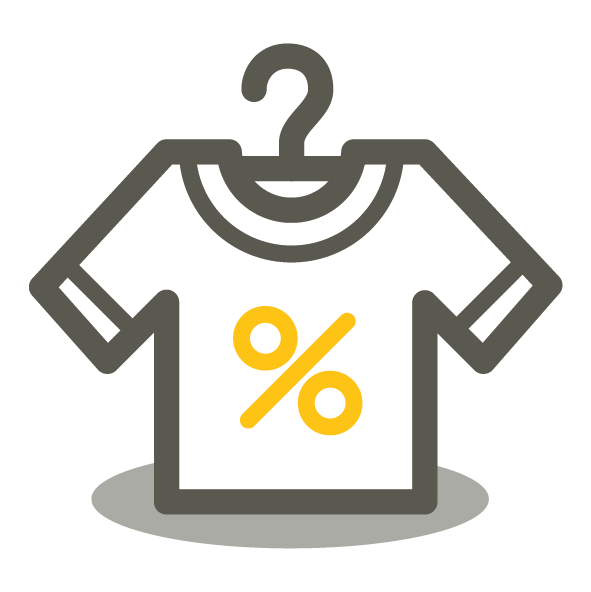The evolution of the retail landscape and rise of online shopping has encouraged retailers to invest substantially in their technology, online offerings, and delivery capabilities. Mounting competition and a change in consumers purchasing methods is likely to force some retailers out of the market, resulting in the closure of even more bricks-and-mortar establishments.
It is essential for retailers to take control of their destinies by adopting a proactive approach to their strategic focus and the use of KPI’s can assist retailers to monitor their performance and react accordingly.
Turnover analysis
Year on year growth is the most common turnover metric. Businesses all want to improve and grow and this measure can be an easy way to see if you are on track allowing you to react accordingly.
Measuring turnover trends and ratios can aid in understanding your customer base and making key strategic decisions. In an industry where consumers are increasingly using multiple channels to shop, this can be used to identify which sales channels are growing and where best to place the strategic direction of the business.
There are three main areas that impact on the level of sales achieved by retailers:
- Their products
- Their people and
- The method in which sales are made.
Using KPI’s to identify where your company needs investment can help drive an increase in turnover whether that be through developing your product line, training and incentivising the sales force, or the development of new areas to generate sales such as through an e-commerce offering.
Profit margins
Knowing the profit made on individual product lines is probably one of the most important ratios for retailers, this data can help determine reasonable mark up prices to ensure the returns on these products are sustainable and comparable in the market place.
Likewise the net profit is equally important as this is how much the business has made after deducting all its costs not just the costs associated with the purchasing or manufacturing of products. Monitoring the net profit can help retailers make strategic decisions that increase their profits whether that be through streaming operations, increasing sales prices or controlling purchasing.
Stock turnover
Stock is the biggest asset of retailers and having money tied up in unnecessary levels of stock can hold retailers back from investing in new initiatives to promote sales and grow their business.
Measuring the rate at which individual product lines are sold enables retailers to optimise their stock levels, identify key product lines and know what products are not selling. This is also ideal for identifying the seasonality and demand of individual product lines. This metric helps retailers identify the ideal levels of stock, supports purchasing decisions and working capital requirements.
SALES OR SHOPPERS TO STAFF
These ratios can be used in strategic staffing decisions. Labour costs can account for 15% of revenue, the largest cost after purchases, getting the staff levels wrong can be costly. Likewise insufficient staffing when shopper levels are high can lead to a loss of sales.
Low sales to shopper’s ratios could also mean that the sales staff need their own targets or incentives to motivate them into increasing sales levels.
CONVERSION RATES
Measuring footfall or website visits alone will not tell you how good the business is at converting browsers into buyers. Measuring the rate at which traffic converts to sales can helps drive retailers initiatives to increase their conversion rates.
E-commerce retailers should also pay particular attention to abandonment rates for customers who are adding products to baskets but not fulfilling the orders. There can be many reasons for abandonment including excessive shipping charges, long drawn out checkout processes or poor conversion funnels. Retailers need to continually analyse and introduce methods to reduce these rates and increase average order sizes.
Repeat purchase rate
Monitoring the rate at which customers make repeat purchases can be an indicator of customer satisfaction, but is important to measure this in conjunction with product returns rate to ensure that a high repeat purchase rate is not due to an unsatisfactory first order.
Reviewing the purchase frequency of repeat customers can be used to drive promotional strategies such as targeted rewards or placing emails in front of customers at the most opportune times leading to increased sales.
Average size order
Measuring average order sizes through ecommerce channels can be done by value or number of items. Combining these metrics can provide valuable information on your customer and the price point of the products that are generating sales through the website and how well you are promoting products through this channel.

Menzies Retail Advisory Services
Menzies specialist retail team works alongside a number of businesses faced with the current challenges of the industry. With our tailored, focussed and informed approach we will be able to provide you with meaningful advice for you to effectively incorporate into your strategy for the future.






